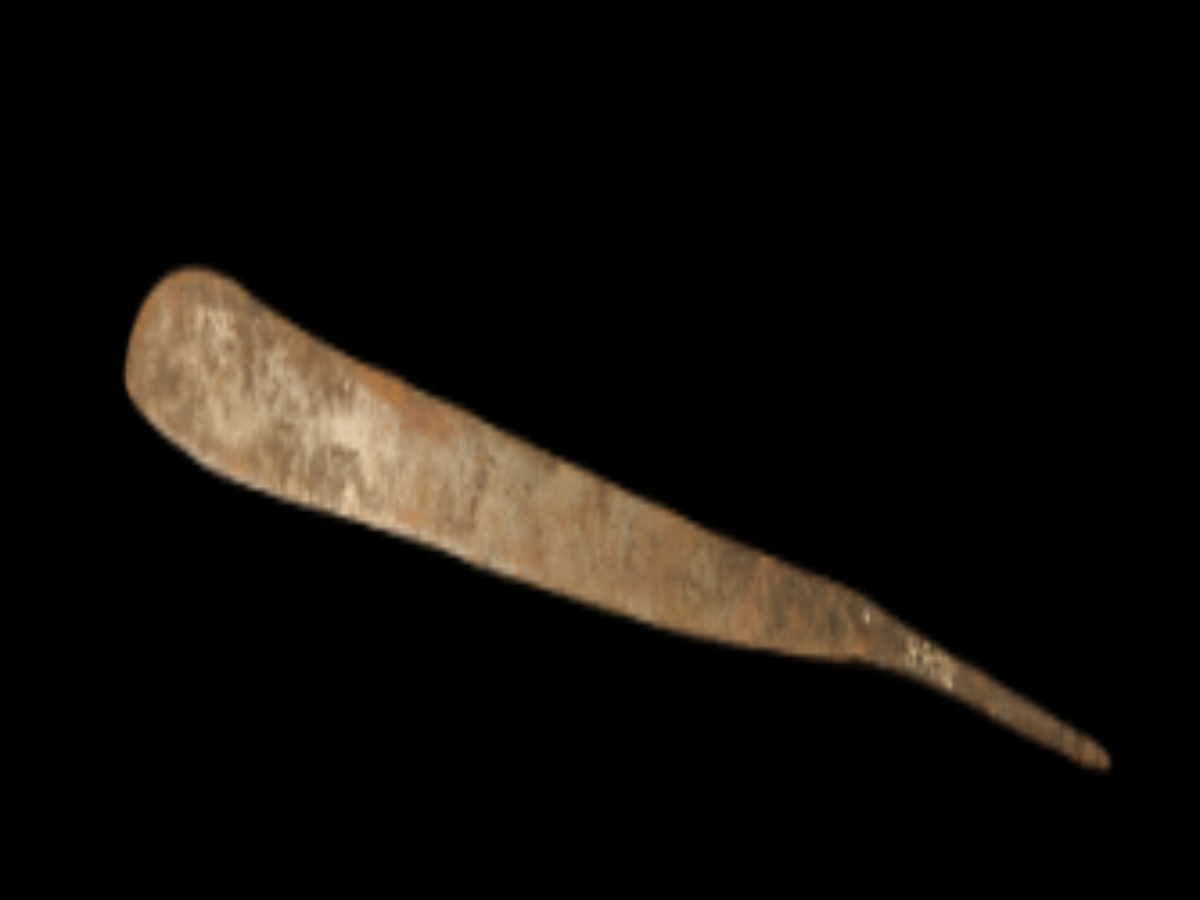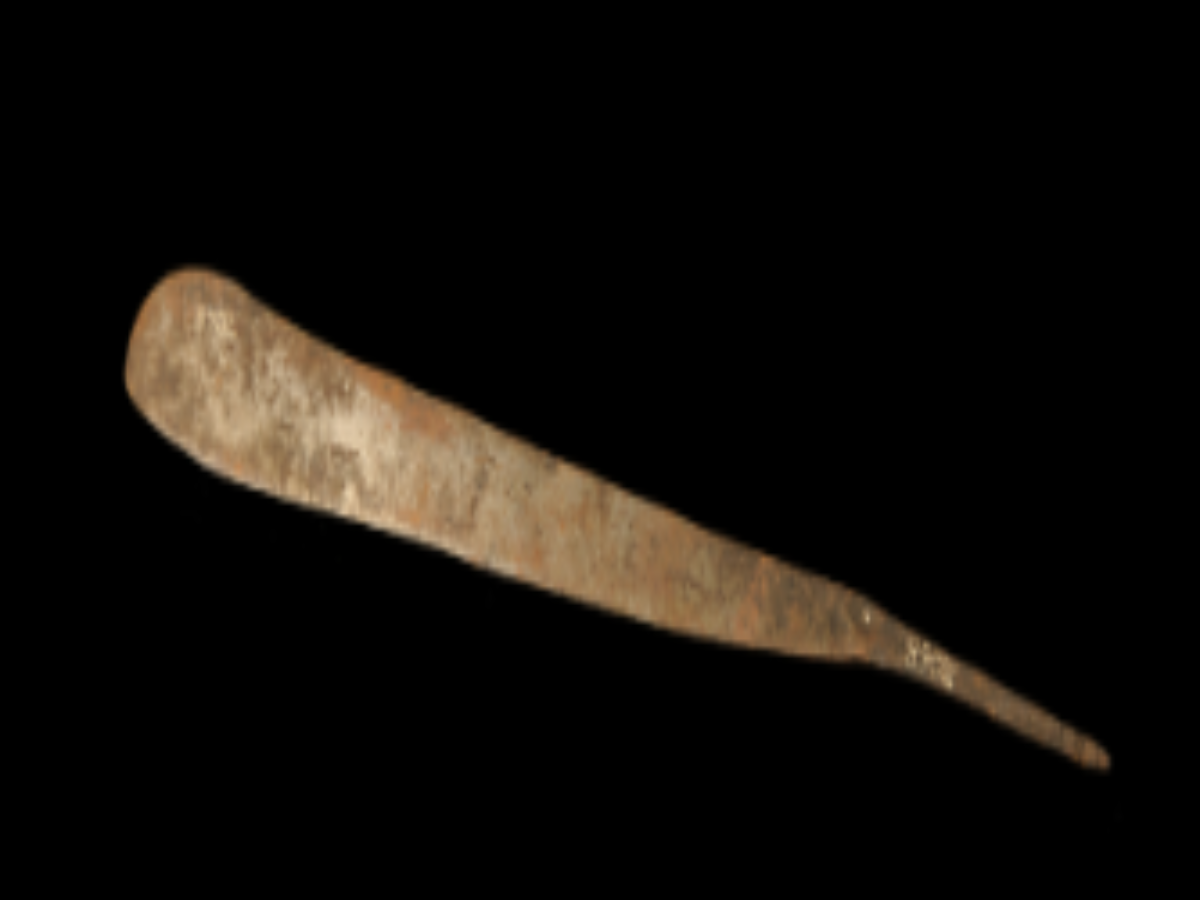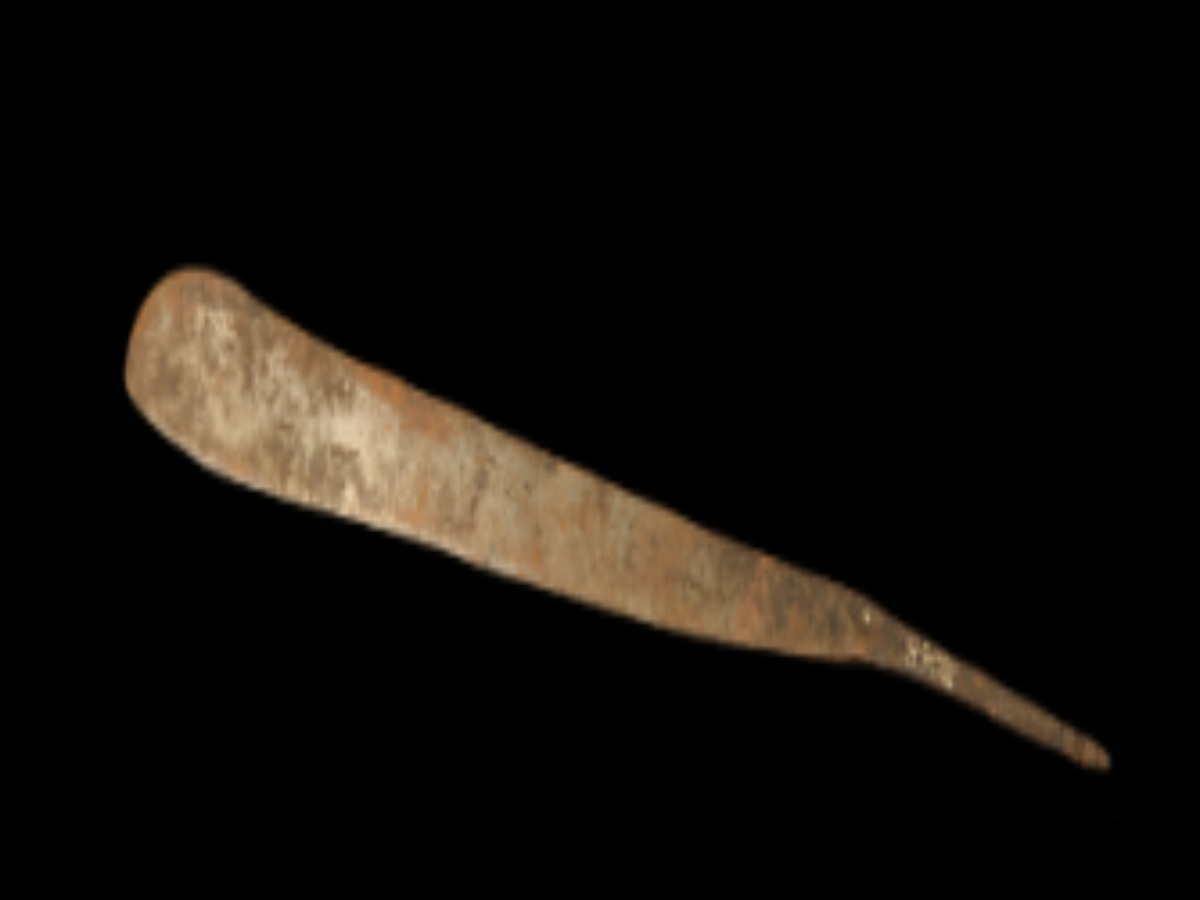State
Tribe Name
Art Type
short description
This iron knife is a very significant one for the Khasi tribe of Meghalaya and provides a strong example of indigenous metalcraft and utility tools relevant to the daily life of the tribe. The remarkably flat upper part, the thin lower part, and the sharp cutting edge characterize the knife, made by the handiwork of the tribesman forging solid knives used mainly for diverse practical works. These knives are the traditional tools for agriculture, food preparation, hunting, and the carving of bamboo or wood. The thick upper structure gives it strength and weight to impart cuts with power, while the lower cutting edge is thin for precision work. Their minimalism and utility speak much about the close-knit relationship of these people with Mother Nature and the dependence that they lay on the tools, which were made by themselves, meant for their hilly terrain and forested ecosystem of the region. Most local blacksmiths frequently hand forge these blades in the time-honous manner relayed by generations.
Thumbnail

Filter Postion
Left
Filter Background
Off
Theme
Filter Header Image

content
Image

description
This iron knife is a very significant one for the Khasi tribe of Meghalaya and provides a strong example of indigenous metalcraft and utility tools relevant to the daily life of the tribe. The remarkably flat upper part, the thin lower part, and the sharp cutting edge characterize the knife, made by the handiwork of the tribesman forging solid knives used mainly for diverse practical works. These knives are the traditional tools for agriculture, food preparation, hunting, and the carving of bamboo or wood. The thick upper structure gives it strength and weight to impart cuts with power, while the lower cutting edge is thin for precision work. Their minimalism and utility speak much about the close-knit relationship of these people with Mother Nature and the dependence that they lay on the tools, which were made by themselves, meant for their hilly terrain and forested ecosystem of the region. Most local blacksmiths frequently hand forge these blades in the time-honous manner relayed by generations.
These utensils mean more than household items, as they narrate tales about the indigenous knowledge systems and self-sufficiency, as well as the Khasi community's respect for functionality and robustness in everyday objects. The iron knife is still an important object within Khasi material culture; it is a live record of transformations that are built in tradition but change with bygone periods according to value systems, tools, and techniques that culture and environment require.and their dependence on tools, which they made themselves, suited for the hilly terrain and forested ecosystem.
These utensils mean more than household items, as they narrate tales about the indigenous knowledge systems and self-sufficiency, as well as the Khasi community's respect for functionality and robustness in everyday objects. The iron knife is still an important object within Khasi material culture; it is a live record of transformations that are built in tradition but change with bygone periods according to value systems, tools, and techniques that culture and environment require.and their dependence on tools, which they made themselves, suited for the hilly terrain and forested ecosystem.
Image Mode
landscape
promoted
On
Verified
Off
